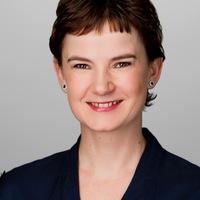Research Interests:
Research Interests:
Research Interests:
Ever since the long awaited reconstruction of the Neues Museum was finally completed in 2009, the building with its collections and carefully restored architecture has been a highlight on the itinerary of visitors to Berlin’s Museum... more
Ever since the long awaited reconstruction of the Neues Museum was finally completed in 2009, the
building with its collections and carefully restored architecture has been a highlight on the itinerary
of visitors to Berlin’s Museum Island. The intention of the architect Friedrich August Stüler and Egyptologist
Richard Lepsius was pedagogical: visitors should see the objects in their ‘original’ context.
The design of the exhibition galleries was inspired by Egyptian temples and tombs. Their architectural
elements and the colorful murals were based on the facsimiles of pharaonic monuments made
during the Royal Prussian Expedition to Egypt and Sudan led by Lepsius. The often incompletely preserved
mural decoration in Egyptian temples and tombs was reconstructed, rearranged, and supplemented
by vedute of important sites. Objects in the collection were restored and exhibited alongside
plaster casts. The opening in 1850 elicited both negative and positive responses from art historians,
journalists, and Egyptologists. In for criticism were the Egyptianizing architecture and wall decoration
of the galleries, the use of non-realistic vedute, the restorations of the objects, and the large
number of plaster casts. Critics also found fault with the poor lighting as well as the administrative
and facilities for visitors supposedly disregarded by those responsible. But this overview of the published
comments shows there was also praise not only for the amazing collection of Egyptian objects,
but also for the wonderful murals and the interaction between décor and antiquities.
building with its collections and carefully restored architecture has been a highlight on the itinerary
of visitors to Berlin’s Museum Island. The intention of the architect Friedrich August Stüler and Egyptologist
Richard Lepsius was pedagogical: visitors should see the objects in their ‘original’ context.
The design of the exhibition galleries was inspired by Egyptian temples and tombs. Their architectural
elements and the colorful murals were based on the facsimiles of pharaonic monuments made
during the Royal Prussian Expedition to Egypt and Sudan led by Lepsius. The often incompletely preserved
mural decoration in Egyptian temples and tombs was reconstructed, rearranged, and supplemented
by vedute of important sites. Objects in the collection were restored and exhibited alongside
plaster casts. The opening in 1850 elicited both negative and positive responses from art historians,
journalists, and Egyptologists. In for criticism were the Egyptianizing architecture and wall decoration
of the galleries, the use of non-realistic vedute, the restorations of the objects, and the large
number of plaster casts. Critics also found fault with the poor lighting as well as the administrative
and facilities for visitors supposedly disregarded by those responsible. But this overview of the published
comments shows there was also praise not only for the amazing collection of Egyptian objects,
but also for the wonderful murals and the interaction between décor and antiquities.
